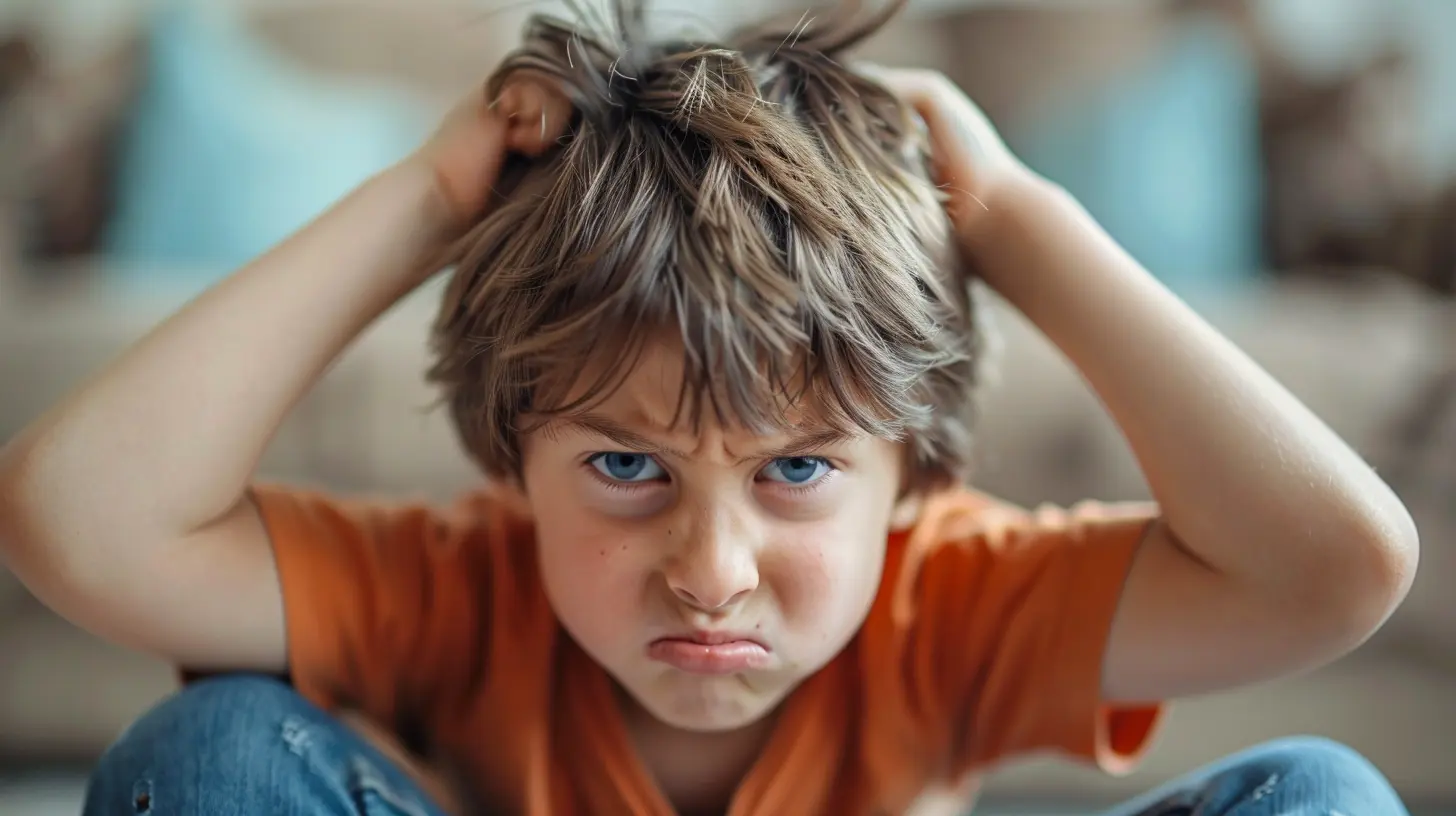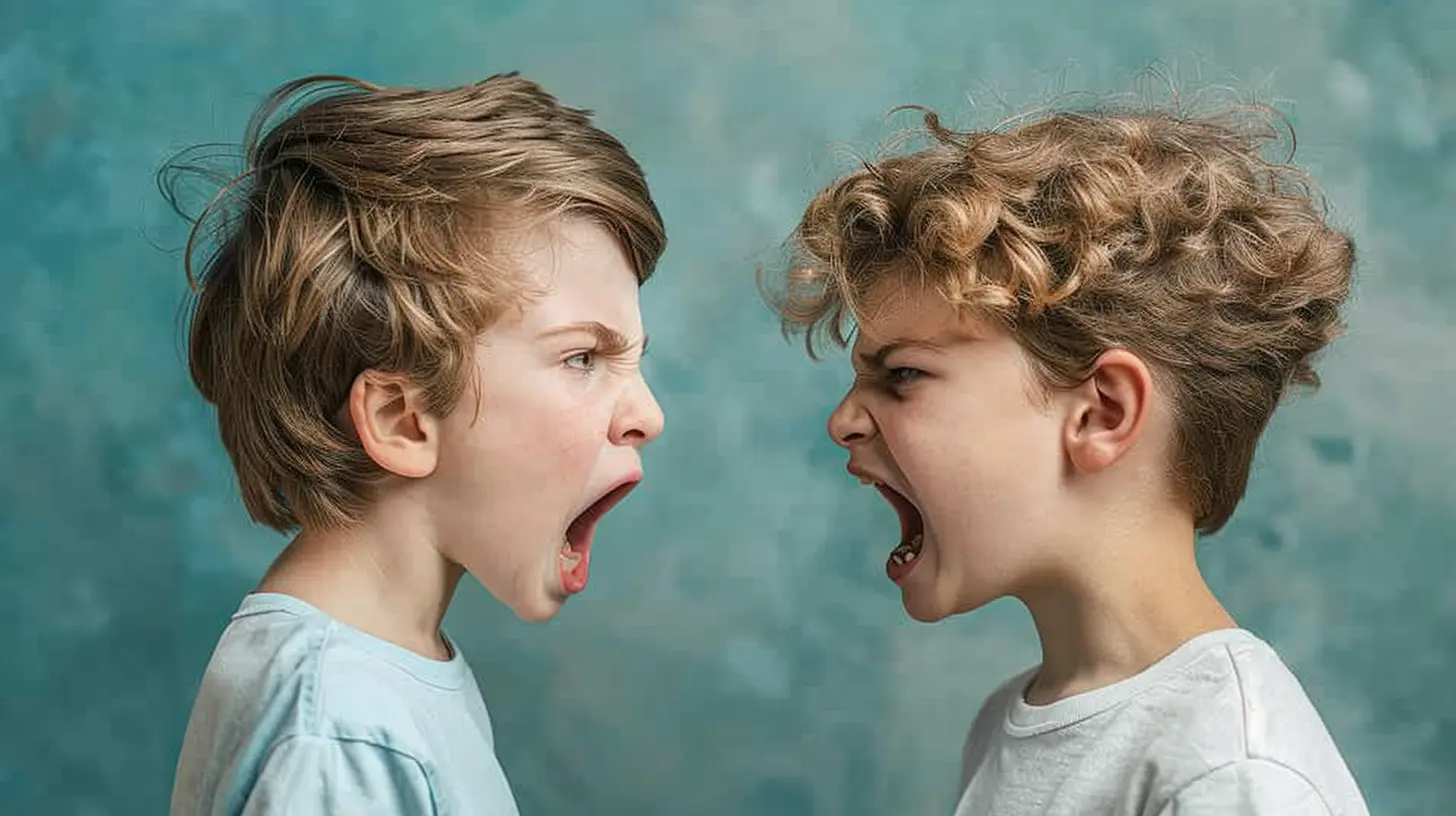Handling Emotional Outbursts: A Guide for Parents
23 September 2025
Let’s be real—parenting is messy. One minute you’re cherishing your little one’s infectious giggles, and the next, you’re dodging flying toys and enduring a scream that could shatter glass. Emotional outbursts are a part of raising kids, and while they might drive you up the wall, they’re actually a crucial part of child development.
So, how do you handle your child’s emotional explosions without losing your sanity? Buckle up because we're diving deep into the world of tantrums, meltdowns, and emotional hurricanes—armed with practical strategies that actually work.

Why Do Kids Have Emotional Outbursts?
Before we dive into the tactics, let’s get one thing straight: kids aren’t throwing fits just to annoy you (even though it might feel that way). Emotional outbursts happen because children haven’t yet mastered emotional regulation. Their brains are still developing, and they lack the coping skills we adults (mostly) have.Here are some common triggers:
- Frustration: They want something but can't have it. Instant meltdown.
- Hunger & Fatigue: A tired or hungry child is a ticking time bomb.
- Overstimulation: Too much noise, too many people, too many choices—it’s overwhelming!
- Lack of Control: They crave independence but don’t yet have the skills to handle it.
- Big Emotions: Sadness, anger, or even excitement can be too much to process.
Understanding why your child is having an emotional outburst is the first step in handling it effectively.

How to Handle Emotional Outbursts Without Losing Your Cool
Now for the good stuff: how do you help your child through these outbursts without flipping out yourself?1. Stay Calm (Even When You Want to Scream)
Kids are like emotional sponges—they absorb everything, especially your reactions. If you meet their chaos with more chaos, the situation escalates. Take a deep breath, lower your voice, and model the calmness you want them to learn.Pro Tip:
If you're about to lose it, step away for a second. A quick pause can make all the difference in how you respond.2. Validate Their Feelings (Without Giving In)
Ever been upset and told to "calm down"? It probably made you want to do the opposite. Kids feel the same way. Instead of shutting them down, acknowledge their emotions:- “I see that you’re really upset right now.”
- “You’re mad because you really wanted that toy, huh?”
- “It’s tough when things don’t go the way we want.”
Validation doesn’t mean giving in. It simply means helping them feel heard and understood.
3. Set Clear Boundaries
Emotions are valid, but that doesn’t mean all behaviors are acceptable. Throwing things? Screaming in someone’s face? Not okay. Set firm but fair limits:- “I understand you’re angry, but we don’t hit.”
- “You’re sad, and that’s okay, but we can’t throw things.”
- “You can be upset, but we need to use kind words.”
Boundaries help kids feel safe while also teaching them important life skills.
4. Offer Alternatives & Coping Strategies
Since kids don’t naturally know how to channel emotions, it’s up to us to teach them:- Deep Breaths: “Let’s take three big breaths together.”
- Stomping It Out: “If you’re mad, try stomping instead of hitting.”
- Hugging a Stuffed Animal: Sometimes, a tight hug is all they need.
- Drawing or Scribbling: Great for expressing feelings without words.
Teaching kids healthy ways to handle big emotions is a game changer.
5. Create a Calm-Down Space
Ever feel like you just need a quiet moment to gather yourself? Kids do too. Instead of time-outs (which can feel like punishment), try a "calm-down corner" with pillows, books, and fidget toys. A designated space helps them reset while also giving them control over their emotions.6. Use Play to Teach Emotional Regulation
Kids learn best through play. Use role-playing, storytelling, or puppets to teach emotional skills. For example:- Use stuffed animals to act out a frustrating situation and show how one handles it calmly.
- Read books about emotions (like “The Color Monster” or “When Sophie Gets Angry”).
- Sing songs about feelings—music helps imprint ideas better than lectures.
Making emotional regulation fun is always a win.
7. Be Consistent
If today you allow screaming over a denied cookie, but tomorrow you shut it down completely, your child will be confused. Consistency is key. Always reinforce the same boundaries, expectations, and coping strategies. Over time, they’ll catch on.
What NOT to Do During an Emotional Outburst
Let’s talk about what doesn’t work. Avoid these common mistakes if you want to see real progress:- Yelling or Threatening: This only teaches kids that big emotions = more shouting.
- Bribing or Giving In: If they scream and you hand over the candy, guess what? They’ll scream every time.
- Ignoring Their Emotions: They need guidance, not dismissal.
- Punishing Emotional Expression: Feeling emotions isn’t bad. It’s how we handle them that matters.

After the Storm: Helping Your Child Reflect
Once the meltdown has passed and they’re calm, talk to them about it. Ask questions like:- “What made you so upset?”
- “How did you feel in your body?”
- “What might help next time?”
This isn’t about shame or blame—it’s about building emotional awareness.
Final Thoughts: You’ve Got This!
Handling emotional outbursts isn’t easy, but you don’t have to be perfect. Every meltdown is a learning moment, both for you and your child. The more you practice these techniques, the easier it gets.So next time your child erupts like a tiny volcano, take a breath, hold your ground, and remember—you’re teaching them skills that will last a lifetime.
all images in this post were generated using AI tools
Category:
Emotional DevelopmentAuthor:

Austin Wilcox
Discussion
rate this article
1 comments
Indigo Chavez
Thank you for this insightful article! Your strategies for managing emotional outbursts in children are both practical and compassionate. I appreciate the emphasis on understanding emotions and fostering open communication. Looking forward to implementing these tips!
October 6, 2025 at 2:39 AM

Austin Wilcox
Thank you for your kind words! I’m glad you found the article helpful and hope the strategies make a positive difference for you and your child. Happy parenting!


